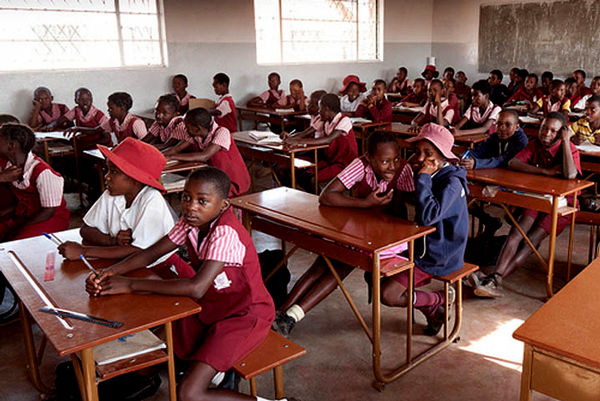
BRIAN CHITEMBA THE Reserve Bank of Zimbabwe (RBZ) governor John Mangudya has poured cold water on market dollarisation hysteresis as the Zimbabwean dollar (Zimdollar) continues to lose value against the United States dollar with the apex bank insisting it is, instead, increasing the use of local currency.

In recent weeks, the Zimdollar has tumbled with parallel market rates rising to around ZW$290-ZW$310: US$1 while the official foreign currency rate at the auction system is now ZW$150,12: US$1.

This has precipitated a sharp rise in prices of goods and services, with the Consumer Council of Zimbabwe (CCZ) pegging a monthly food basket of six at ZW$93 146 (US$620).
Most workers in the public and private sector earn around ZW$50 000 (US$330), meaning more people have been plunged into economic dire straits.
A World Bank study puts those living in extreme poverty at seven million — almost half of the Zimbabwean population.
The stratospheric rise of prices of goods and services has stoked inflation figures to 72,7% in March from 66,1% in February, resulting in economists suggesting dollarisation.
Some leading economists, including the Africa Economic Development Strategies director Gift Mugano, project that the economy could dollarise by June 2022.
However, in an exclusive interview with the Zimbabwe Independent this week, Mangudya rebutted dollarisation suggestions by economists and consumers.
- Chamisa under fire over US$120K donation
- Mavhunga puts DeMbare into Chibuku quarterfinals
- Pension funds bet on Cabora Bassa oilfields
- Councils defy govt fire tender directive
Keep Reading
He was adamant that government would contain the volatile inflationary pressures.
Mangudya said: “Government is staying on course in implementing measures to de-dollarise the economy. More still needs to be done to create a supper strong demand for the local currency, especially given the dollarisation hysteresis in the economy.
“As already advised, de-dollarisation is a process of increasing the use of the local currency in the economy. Currently the economy, as measured by broad money statistics, is de-dollarised to the tune of 55% from the 100% dollarised economy at the beginning of 2019. Increasing the demand for the local currency will increase the de-dollarisation process.”
The RBZ chief admitted that government was having sleepless nights due to the soaring inflation, which he attributed to global inflation emanating from the Russia-Ukraine war that has pushed fuel, food and freight costs.
Although the annual inflation has risen to 72,7% in March 2022, the central bank chief, further insisted that the rate will fall to between 50% and 70% by the end of the year.
It will then decline to between 10% and 20% by end of December 2023, posits Mangudya.
“The primary mandate of the bank is to achieve and maintain price and financial system stability, which is a necessary precondition for sustainable economic development. The recent decision by the Monetary Policy Committee (MPC) to increase the interest rates to stem out speculative borrowing, reduce exchange rate instability and inflationary pressures, should therefore be viewed in light of this primary mandate of the bank,” the RBZ governor said.
“Some companies have been increasingly borrowing to purchase foreign currency on the auction system but continue to charge prices at parallel market rates, thereby, causing instabilities in the foreign exchange market.
“As such, the tightening of monetary policy through increasing interest rates is aimed at controlling inflationary pressures in the economy.”
Mangudya then defended the introduction of the new ZW$100 note, saying it will not stoke inflationary pressures as banks will exchange the notes with their bank balances at the central bank.
“It’s not free money. The net effect of the exchange is zero, as balances are merely changing form from electronic to physical notes. As a result, this will not have any impact on reserve money, as no new currency would have been issued. The concern is therefore not justified at all. The concerns are not economic,” he said.
The RBZ boss explained that big companies throughout the world do not predominantly use cash to settle payments but cash is used for small transactions by individuals and corporates for petty cash to make small payments, purchases, and reimbursements.
With the increasing digitisation, Mangudya said, cash will mainly be used for small transactions.
“As such big companies will not be disadvantaged by this arrangement as they don’t need huge amounts of cash. Big trades will continue to be settled through electronic means, which is now the significant mode of payment at 96% of total transactions in the economy,” he said.
“The ZW$100 was therefore introduced for the convenience of the transacting public, who need to carry cash for their small transactions.” Mangudya further attributed the Zimbabwe inflation to economic and non-economic factors, some of which include spill-over effects or imported inflation.
According to the central bank, inflation is rising due to a mismatch between supply and demand of goods and services within the domestic economy.
To solve the crisis, Mangudya was of the view that: “The solution is to increase production and productivity within the national economy so as to stabilise prices and/or to reduce aggregate demand to bring it in line with aggregate supply. Reliance on other countries’ production is not good for stabilising prices as it increases vulnerability.
“The non-economic drivers of inflation are rent-seeking behaviour and negative past experiences of high inflation.
“Rent-seeking is problematic because once it becomes internalized, it becomes an industry driven by the motive to create arbitrage opportunities, where the parallel exchange rate becomes a moving target (tool) to perpetuate arbitrage profits, and in turn the pass-through of the parallel exchange rates causes inflationary pressures in the domestic economy.”
He said the RBZ will continue refining the foreign currency auction system and to liberalise the foreign exchange market.
“You may also recall that, the minimum for the Small to Medium Enterprises foreign exchange is US$2 500, while amounts below this were being met through the bureux de change at the prevailing exchange rate plus a cost-plus margin of a maximum of 10%,” Mangudya said.
“As such, the liberalisation of the US$1 000 through banks is a positive move to enhance confidence in the foreign exchange market and to allow for the continuous market price discovery of the exchange rate thus improving the efficacy of the auction system.
“This policy direction is also expected to go a long way in curbing parallel market activities due to increased scope for trading foreign currency through normal banking channels,” Mangudya said.
The full interview will be published next week.











